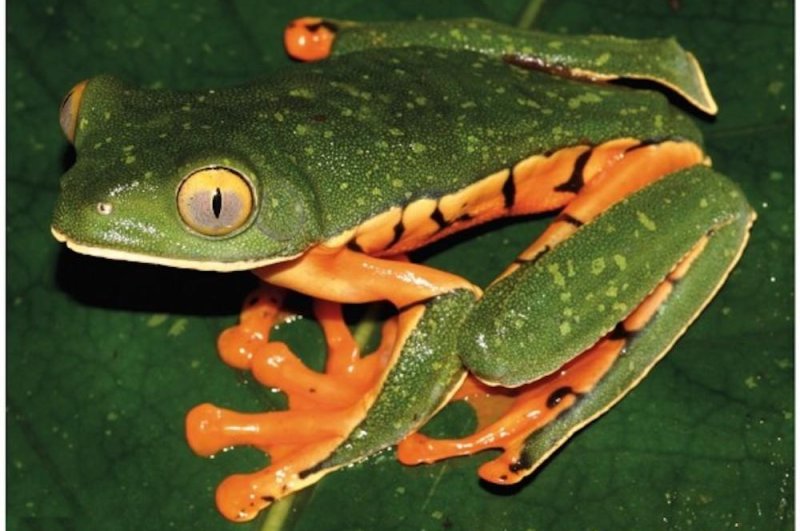Herpetologist Andrew Gray named the new species, Sylvia's tree frog, after his 3-year-old granddaughter. Photo by University of Manchester
July 31 (UPI) -- An iconic tree frog has a new name and classification, thanks to researchers at the University of Manchester.
Andrew Gray, curator of herpetology at Manchester Museum, named the new species Sylvia's tree frog after his young granddaughter. The species scientific name is Cruziohyla sylviae.
Nearly two decades of research led to this week's description of the new species in the journal Zootaxa.
Scientists have, however, been unwittingly studying Sylvia's tree frog for much longer. Sylvia's tree frog looks a lot like the splendid tree frog, which was first discovered in Panama in 1902. Gray and his colleagues now know scientists first observed Sylvia's tree frog in 1925, but for nearly a century, the two remained confused.
That an iconic species is actually two unique species is exciting news. In this instance, however, it means conservationists must protect two threatened species, not one.
The discovery of Sylvia's tree frog means the splendid tree frog is even rarer than scientists thought. Researchers estimate that there are fewer than 50 splendid tree frogs in the wild, and only 150 Sylvia's tree frogs.
"It's remarkable that such a distinctive new species has remained undetected for such a long time," Gray said in a news release. "However, more importantly, this work highlights that an assessment of the conservation needs for each species is urgently required to ensure these amazing creatures are still around in another 100 years."
Scientists were able to contextualize their most recent analysis of the two tree frogs thanks to the Manchester Museum's significant fossil record.
"It's a real privilege to be maintaining such rare frogs in our collection and supporting amphibian conservation around the planet," said museum director Esme Ward. "This multi-disciplined research highlights the importance of museum collections, where both live and historical specimens are aiding current taxonomy to make a real difference in shaping the future of wildlife conservation."















